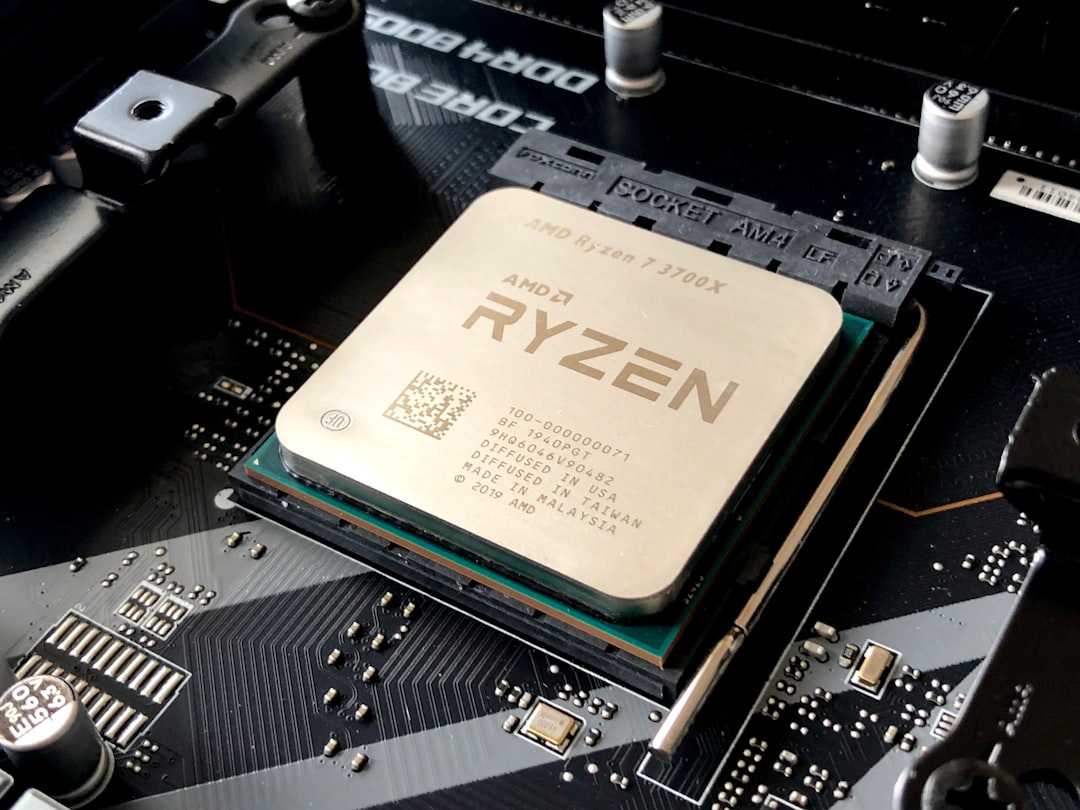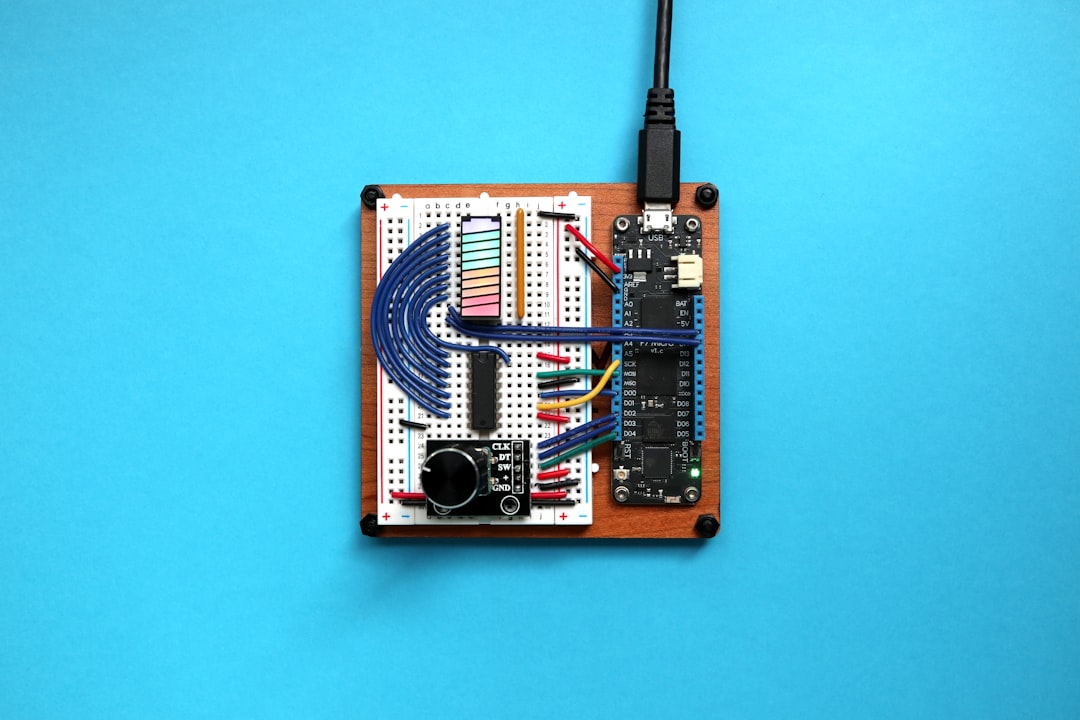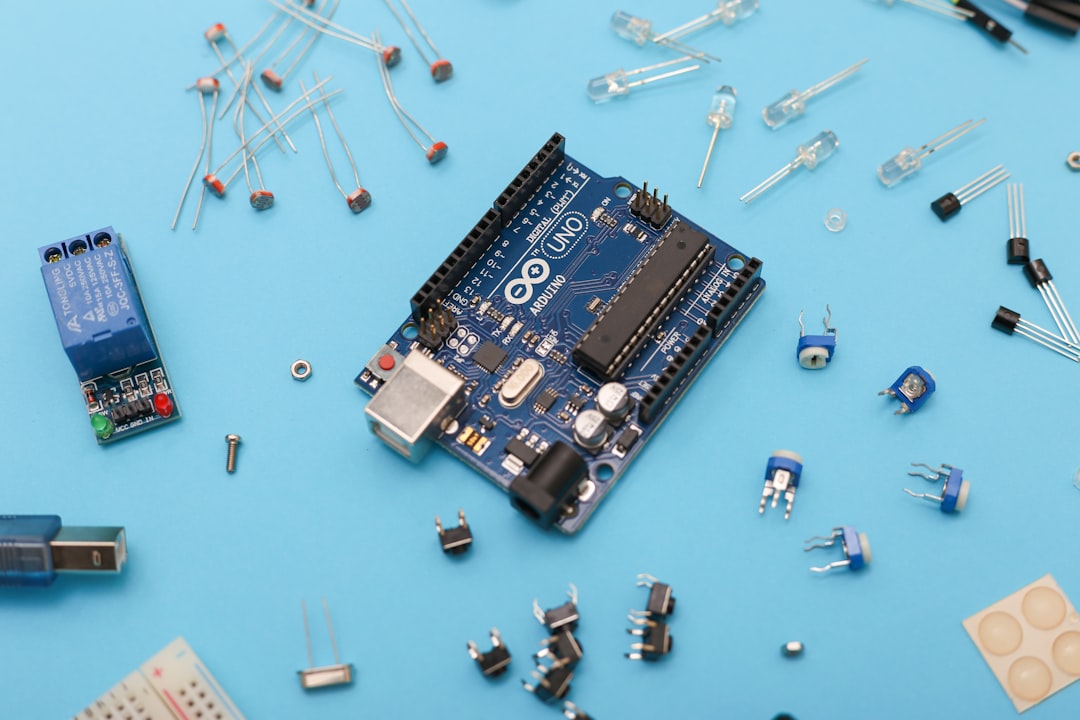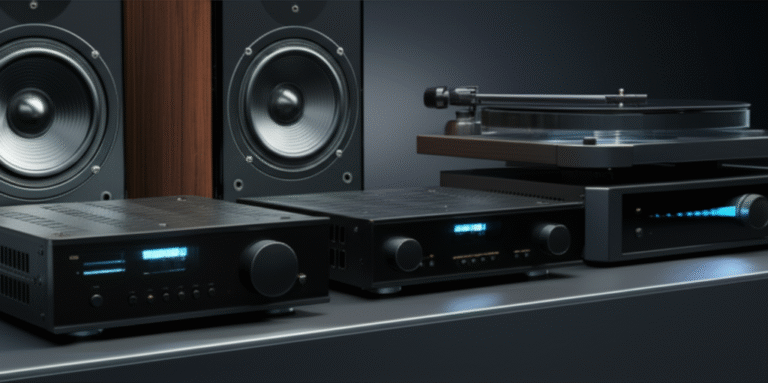Support our educational content for free when you purchase through links on our site. Learn more
What is Audio Electronics? 10 Essential Insights You Need! 🎶 [2025]
Have you ever wondered what makes your favorite songs sound so good? Or how a simple microphone can capture the magic of a live performance? Welcome to the fascinating world of audio electronics! In this article, we’ll dive deep into the components, technologies, and innovations that shape our audio experiences. From microphones to mixing consoles, we’ll explore 10 essential insights that every music lover, audiophile, or aspiring sound engineer should know.
Did you know that the transition from analog to digital audio has transformed not just how we listen to music, but also how we create it? With the rise of digital audio workstations (DAWs) and high-resolution streaming, the landscape of audio electronics is evolving faster than ever. Stick around as we unravel the intricacies of this captivating field and reveal how you can enhance your own audio setup!
Key Takeaways
- Understanding Audio Electronics: Audio electronics encompass devices that reproduce, record, or process sound, including microphones, amplifiers, and speakers.
- Historical Evolution: From the phonograph to digital audio workstations, the evolution of audio technology has dramatically improved sound quality and accessibility.
- Key Components: Essential audio electronics include microphones, amplifiers, speakers, mixing consoles, and audio interfaces.
- Choosing the Right Gear: Selecting the right audio equipment depends on your specific needs, whether for recording, live sound, or home listening.
- Troubleshooting Common Issues: Familiarize yourself with common problems like no sound output or distorted sound, and learn how to troubleshoot effectively.
Ready to elevate your audio experience? 👉 Shop top brands like Yamaha, Bose, and PreSonus to find the perfect gear for your needs! 🎧 Shop Yamaha Products | Shop Bose Products | Shop PreSonus Products
Table of Contents
Quick Tips and Facts
Understanding Audio Electronics: What You Need to Know
The Evolution of Audio Electronics: A Historical Perspective
Key Components of Audio Electronics
Types of Audio Electronics: From Amplifiers to Speakers
How Audio Electronics Work: The Science Behind the Sound
Choosing the Right Audio Electronics for Your Needs
Top Brands in Audio Electronics: Who to Trust
Common Issues and Troubleshooting Tips for Audio Electronics
Future Trends in Audio Electronics: What’s on the Horizon?
Conclusion
Recommended Links
FAQ
Reference Links
Quick Tips and Facts
- Audio electronics encompass devices that reproduce, record, or process sound. 🎶
- Key components include amplifiers, speakers, microphones, and mixing consoles.
- The evolution from analog to digital technology has revolutionized audio quality and accessibility.
- When choosing audio electronics, consider design, functionality, and compatibility with your existing setup. ✅
- Popular brands include Yamaha, Sony, Bose, and PreSonus.
Understanding Audio Electronics: What You Need to Know
Audio electronics are the backbone of sound production and playback. They include a variety of devices designed to manipulate audio signals, whether for recording, mixing, or amplification. From the humble microphone to complex mixing consoles, understanding these components can elevate your audio experience.
Key Features of Audio Electronics
| Feature | Description |
|---|---|
| Signal Processing | The ability to alter audio signals for desired effects. |
| Connectivity | Options like Bluetooth, USB, and traditional cables for versatile use. |
| Portability | Many devices are designed for ease of transport, ideal for musicians on the go. |
| User Interface | Intuitive controls can enhance usability, especially for beginners. |
Why They Matter
Imagine attending a concert where the sound is muddled or distorted. 🎤 Audio electronics ensure clarity and quality, making every note resonate perfectly. Whether you’re a budding musician or a seasoned audiophile, investing in quality audio gear is essential for an immersive experience.
The Evolution of Audio Electronics: A Historical Perspective
The journey of audio electronics is fascinating! From the invention of the phonograph in the late 19th century to today’s digital audio workstations, each advancement has transformed how we interact with sound.
Milestones in Audio Electronics History
- 1877: Thomas Edison invents the phonograph, the first device to record and reproduce sound.
- 1925: The introduction of the electrical microphone revolutionizes sound recording.
- 1960s: The rise of stereo sound brings a new dimension to music listening.
- 1980s: The digital revolution begins, leading to CDs and digital audio formats.
- 2000s: The emergence of streaming services changes how we consume music.
Impact on Modern Audio
These advancements have made high-quality audio more accessible than ever. Today, you can enjoy studio-quality sound at home or on the go, thanks to innovations in both hardware and software.
Key Components of Audio Electronics
Understanding the key components of audio electronics is crucial for anyone looking to enhance their audio setup. Here’s a breakdown of the essentials:
1. Microphones 🎤
- Function: Capture sound waves and convert them into electrical signals.
- Types: Dynamic, condenser, and ribbon microphones, each with unique characteristics.
- Recommended Brands: Shure, Audio-Technica, Rode.
2. Amplifiers 🔊
- Function: Boost audio signals to drive speakers.
- Types: Integrated, power, and headphone amplifiers.
- Recommended Brands: Yamaha, Marantz, Denon.
3. Speakers 🎶
- Function: Convert electrical signals back into sound waves.
- Types: Floor-standing, bookshelf, and portable speakers.
- Recommended Brands: Bose, Klipsch, JBL.
4. Mixing Consoles 🎚️
- Function: Combine multiple audio signals and control their levels.
- Types: Analog and digital mixers.
- Recommended Brands: PreSonus, Behringer, Allen & Heath.
5. Audio Interfaces 💻
- Function: Connect microphones and instruments to a computer for recording.
- Recommended Brands: Focusrite, Universal Audio, MOTU.
Types of Audio Electronics: From Amplifiers to Speakers
When diving into the world of audio electronics, you’ll encounter various types of equipment tailored for different needs. Here’s a comprehensive list:
- Microphones
- Amplifiers
- Speakers
- Mixing Consoles
- Audio Interfaces
- Headphones
- Effects Processors
- Digital Audio Workstations (DAWs)
- Sound Cards
- Home Theater Systems
Comparison of Popular Audio Electronics
| Type | Brand | Key Features | User Rating (1-10) |
|---|---|---|---|
| Microphone | Shure SM58 | Dynamic, rugged, great for vocals | 9 |
| Amplifier | Yamaha A-S501 | Integrated, high-quality sound, versatile inputs | 8 |
| Speaker | Bose SoundLink | Portable, Bluetooth, excellent battery life | 9 |
| Mixing Console | PreSonus Studio | Digital, intuitive interface, great for home studios | 8 |
| Audio Interface | Focusrite Scarlett 2i2 | USB, high-quality preamps, compact design | 9 |
How Audio Electronics Work: The Science Behind the Sound
Understanding how audio electronics work can enhance your appreciation for sound. Here’s a simplified breakdown:
The Signal Chain
- Sound Waves: Everything starts with sound waves produced by instruments or voices.
- Microphone: Converts sound waves into electrical signals.
- Mixer/Interface: Adjusts levels and processes signals.
- Amplifier: Boosts the signals to a level suitable for speakers.
- Speakers: Convert electrical signals back into sound waves for your ears to enjoy.
The Role of Digital Technology
With the advent of digital technology, audio signals can be manipulated with incredible precision. Digital audio workstations allow for complex editing and effects that were once only possible in high-end studios.
Choosing the Right Audio Electronics for Your Needs
Selecting the right audio gear can be overwhelming, but we’re here to help! Here are some tips to guide your decision:
Consider Your Purpose
- Recording: Look for high-quality microphones and audio interfaces.
- Live Sound: Invest in reliable mixers and amplifiers.
- Home Listening: Prioritize speakers and headphones that offer rich sound quality.
Assess Compatibility
Ensure that your new equipment is compatible with your existing setup. Check for connectivity options like USB, Bluetooth, or traditional audio cables.
Read Reviews and Test
Before making a purchase, read user reviews and, if possible, test the equipment in-store. This can give you a feel for the sound quality and usability.
Top Brands in Audio Electronics: Who to Trust
When it comes to audio electronics, certain brands have established themselves as leaders in the industry. Here are some of the most trusted names:
- Yamaha: Known for high-quality sound and reliability across various audio products.
- Sony: Offers a wide range of audio electronics, from headphones to home theater systems.
- Bose: Renowned for premium sound quality and innovative design.
- PreSonus: A favorite among musicians for their mixing consoles and audio interfaces.
Why Brand Matters
Investing in reputable brands often means better customer support, warranty options, and overall product quality. It’s worth doing your homework to ensure you’re buying from a trusted source.
Common Issues and Troubleshooting Tips for Audio Electronics
Even the best audio gear can encounter issues. Here are some common problems and how to troubleshoot them:
1. No Sound Output
- Check Connections: Ensure all cables are securely connected.
- Volume Levels: Verify that the volume is turned up on both the device and the amplifier.
2. Distorted Sound
- Adjust Levels: Lower the gain on your mixer or audio interface.
- Inspect Equipment: Look for damaged cables or faulty components.
3. Interference
- Change Location: Move wireless devices away from your audio gear.
- Use Shielded Cables: This can help reduce interference from other electronic devices.
Future Trends in Audio Electronics: What’s on the Horizon?
As technology evolves, so does the world of audio electronics. Here are some trends to keep an eye on:
1. Wireless Technology:
- The shift towards wireless audio solutions is growing, making setups cleaner and more convenient.
2. Smart Audio Devices:
- Integration with smart home systems will become more prevalent, allowing for voice-controlled audio setups.
3. High-Resolution Audio:
- As streaming services adopt higher quality formats, the demand for equipment that can handle high-resolution audio will increase.
4. Sustainability:
- Brands are focusing on eco-friendly materials and manufacturing processes, appealing to environmentally conscious consumers.
Conclusion

In summary, understanding audio electronics is essential for anyone looking to enhance their audio experience. From microphones to speakers, each component plays a crucial role in how we enjoy sound. Whether you’re a musician, a home theater enthusiast, or just someone who loves great audio, investing in quality gear can make all the difference.
Recommended Links
FAQ

Q: What are the essential components of an audio setup?
A: At a minimum, you’ll need a microphone, an amplifier, and speakers. Depending on your needs, you might also want a mixing console or audio interface.
Q: How do I choose the right microphone for recording?
A: Consider the type of sound you’ll be capturing, the environment, and whether you need a dynamic or condenser microphone.
Q: Are wireless audio systems reliable?
A: Yes, modern wireless systems offer excellent sound quality and reliability, but it’s essential to choose reputable brands and ensure proper setup.
Reference Links
With this comprehensive guide, you’re now equipped to dive into the world of audio electronics! 🎧 Happy listening!
Conclusion

In conclusion, audio electronics play a pivotal role in how we experience sound, whether it’s through recording, mixing, or simply enjoying our favorite tunes. From microphones to amplifiers, each component serves a unique purpose that contributes to the overall audio quality.
Summary of Positives and Negatives
-
Positives:
- Versatility: Audio electronics cater to various applications, from home listening to professional studio setups.
- Quality: Brands like Yamaha, Bose, and PreSonus consistently deliver high-quality products that enhance sound clarity and richness.
- Innovation: The shift towards digital and wireless technologies has made audio gear more accessible and user-friendly.
-
Negatives:
- Complexity: The wide range of options can be overwhelming for beginners.
- Cost: High-quality audio equipment can be a significant investment, although it often pays off in performance.
Overall, we confidently recommend investing in reputable brands and understanding your specific audio needs. Whether you’re setting up a home studio or upgrading your sound system, the right audio electronics can transform your listening experience. 🎶
Recommended Links
- 👉 Shop Yamaha Products: Amazon | Yamaha Official
- 👉 Shop Bose Products: Amazon | Bose Official
- 👉 Shop PreSonus Products: Amazon | PreSonus Official
- Books on Audio Electronics: The Art of Electronics | Modern Recording Techniques
FAQ

What are the key components of audio electronics?
Key Components Explained
- Microphones: Capture sound waves and convert them into electrical signals.
- Amplifiers: Boost audio signals to drive speakers.
- Speakers: Convert electrical signals back into sound waves.
- Mixing Consoles: Combine multiple audio signals and control their levels.
- Audio Interfaces: Connect microphones and instruments to a computer for recording.
These components work together to create a seamless audio experience, whether in a studio or at home.
Read more about “15 Vintage Hi-Fi Brands That Defined Audio Excellence 🎶”
What are the applications of audio electronics in music production?
Applications in Music Production
Audio electronics are essential in various stages of music production, including:
- Recording: Microphones and audio interfaces capture sound.
- Mixing: Mixing consoles allow for the adjustment of levels and effects.
- Mastering: Specialized equipment ensures the final product sounds polished and professional.
These applications are crucial for producing high-quality music that resonates with listeners.
How has audio electronics technology evolved over time?
Evolution of Technology
The evolution of audio electronics has been marked by significant milestones:
- Analog to Digital: The transition from analog devices to digital technology has improved sound quality and processing capabilities.
- Wireless Technology: The rise of Bluetooth and Wi-Fi has made audio devices more portable and user-friendly.
- Software Integration: Digital Audio Workstations (DAWs) have revolutionized music production, allowing for complex editing and effects.
This evolution has made high-quality audio more accessible to everyone.
What are the basic principles of audio signal processing?
Principles of Audio Signal Processing
Audio signal processing involves manipulating audio signals to achieve desired effects. Key principles include:
- Sampling: Converting analog signals into digital form by taking samples at regular intervals.
- Filtering: Removing unwanted frequencies to enhance sound quality.
- Dynamic Range Compression: Reducing the volume of loud sounds and increasing the volume of soft sounds to create a balanced output.
Understanding these principles can help you make better choices in audio electronics.
What are some common problems encountered in audio electronics and how can they be solved?
Common Problems and Solutions
- No Sound Output: Check connections and volume levels.
- Distorted Sound: Adjust levels and inspect for damaged cables.
- Interference: Move wireless devices away from audio gear and use shielded cables.
By being aware of these common issues and their solutions, you can troubleshoot effectively and maintain your audio equipment.
Reference Links
By exploring these resources, you can deepen your understanding of audio electronics and stay updated on the latest trends and technologies. Happy listening! 🎧



